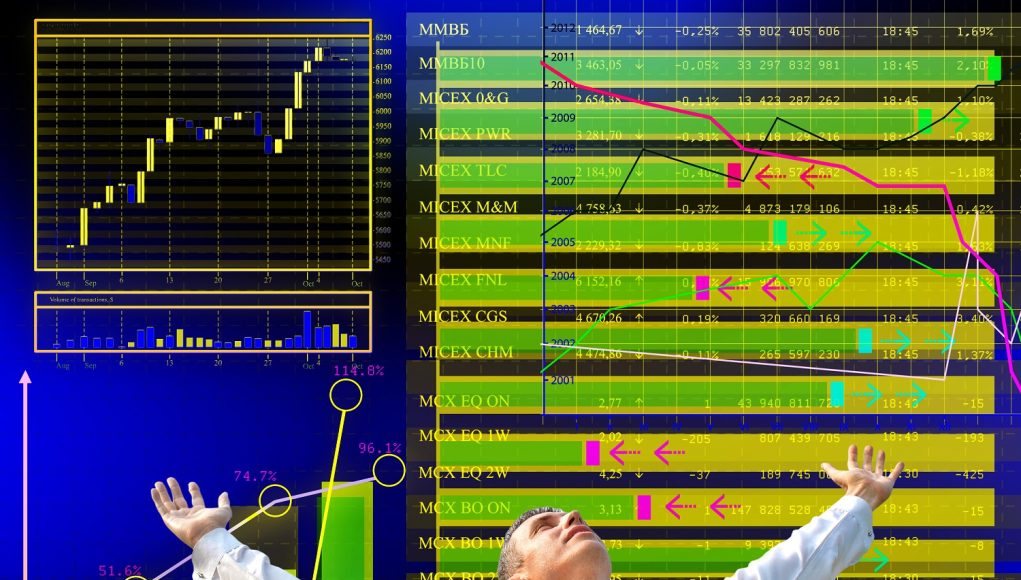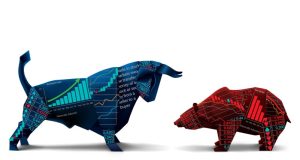Market noise is relentless. Financial headlines scream about the same handful of stocks while important opportunities—the kind that can meaningfully impact your portfolio—often fly completely under the radar.
That’s exactly why we publish this watchlist each week.
While most investors are distracted by mainstream narratives, we’re digging through earnings transcripts, analyzing technical setups, and monitoring institutional money flows to identify companies at potential inflection points. Our focus isn’t on what’s already priced in, but rather on what the market hasn’t fully appreciated yet.
Each week, we spotlight three stocks that merit your attention. We focus on opportunities where timing, valuation, and catalysts align to create potentially favorable entry points.
Our rigorous analysis goes beyond surface-level metrics to identify opportunities that most retail investors don’t have time to uncover. Each pick comes with clear reasoning, specific triggers to watch for, and a compelling risk-reward profile designed to help you make more informed investment decisions.
Here’s what caught our eye this week:
Rocket Lab USA (RKLB)
Rocket Lab USA represents a compelling opportunity in the rapidly expanding space industry, having established itself as a leader in small satellite launch services through exceptional execution and reliability. Trading at around $44.10 per share with a market capitalization of just over $20 billion, the company has achieved remarkable success with 64 of its Electron small launch vehicles successfully reaching orbit over the past decade, with only four failures. What makes Rocket Lab particularly attractive is its superior track record compared to competitors, vastly outperforming rivals like Firefly Alpha (two successful launches out of six attempts), Virgin Orbit’s retired Launcher One (four out of six), and Astra’s Rocket 3 (two out of seven), while matching the reliability of Northrop Grumman’s established Minotaur and Pegasus series.
The company’s proven execution has created a positive business flywheel that positions it perfectly for the current space boom driven by military, commercial, and communications demand. Coming into 2025, Rocket Lab had over 20 launches planned for the year, with missions including payloads for imaging, monitoring, intelligence, and wildfire detection. Beyond the core Electron platform, the company is expanding its capabilities through the Hypersonic Accelerator Suborbital Test Electron (HASTE) platform, which has already won important contracts in hypersonic flight and is competing for high-profile programs from the U.S. Air Force and U.K. Ministry of Defence.
Rocket Lab’s medium-lift Neutron launch vehicle adds significant growth potential through its inclusion in the $5.6 billion U.S. Space Force National Security Space Launch program as one of just five launchers given highest priority for Defense Department missions. CEO Peter Beck’s expansion plans include entering European markets through a new holding company structure designed to maintain required national security separation while capturing greater global market share. The space services market continues expanding as changing geopolitical conditions force nations to increase defense spending while private companies pursue satellite constellations for communications alternatives to land-based networks. For growth investors seeking exposure to the space industry revolution, Rocket Lab offers proven execution capabilities, expanding addressable markets, and significant upside potential as space-based platforms become increasingly critical for both military operations and commercial applications.
Clorox (CLX)
Clorox presents an attractive defensive opportunity as Morgan Stanley’s Aaron Dunn argues the consumer products giant has “found a bottom” following a 24% decline this year that has created compelling value in an overlooked sector. The consumer staples sector now contributes just 5% of the S&P 500, reaching the lowest level since the tech bubble of the early 2000s, setting up potential relative outperformance as investors eventually rotate toward defensive names. What makes Clorox particularly appealing is its positioning as a company “great at innovation” that “looks relatively inexpensive” while offering defensive characteristics without the food deflation issues plaguing many other consumer staples companies.
The company’s recent struggles stem from broader sector headwinds rather than company-specific issues, with Clorox predicting greater drops in annual sales and profit than originally expected while shares fell alongside the broader consumer staples decline. However, this creates an asymmetric risk-reward setup where Dunn sees “not a lot of downside” but “a lot of upside optionality and potential relative outperformance should the market roll over from all-time highs.” Clorox’s defensive positioning becomes particularly valuable during market uncertainty while its innovation capabilities provide growth potential beyond traditional defensive plays.
The company is in the midst of a comprehensive five-year operational improvement effort that began in fiscal 2022, focusing on supply chain optimization and inventory management through implementation of a new enterprise resource planning (ERP) system. These infrastructure investments should position Clorox for improved operational efficiency and margin expansion as the initiatives mature. Wall Street consensus shows mixed sentiment with an average price target of $138.48 representing 13.35% upside potential, with the highest target reaching $189.00. For investors seeking a defensive position with upside potential in an undervalued sector, Clorox offers the combination of operational improvements, defensive characteristics, and contrarian value that could deliver strong returns as market conditions evolve.
Tapestry (TPR)
Tapestry represents a compelling buy-the-dip opportunity following a 16% sell-off after the Coach parent company warned about tariff impacts on profits, creating what Wells Fargo views as an overdone reaction to solid underlying business trends. Wells Fargo reiterated its overweight rating while raising the price target to $120 per share from $100, implying more than 25% upside from recent levels around $95.69. What makes this selloff particularly attractive is the disconnect between the “weak” fiscal 2026 outlook that triggered the decline and the accelerating topline trajectory that continues beating expectations, with Coach demonstrating upward momentum while average unit retail dynamics remain intact.
The investment thesis strengthens considerably following the court’s decision to block Tapestry’s deal with Capri, which leaves the company with a significant cash war chest to deploy toward shareholder returns through buybacks, creating substantial accretion opportunities. Wells Fargo analyst Ike Boruchow emphasizes focusing on the near-term revenue acceleration rather than longer-term guidance concerns, noting that the company’s fundamental performance continues outpacing expectations despite tariff headwinds. Multiple analysts share this contrarian view, with Barclays also advising clients to buy the dip while Morgan Stanley acknowledged that expectations were elevated heading into recent results.
Wall Street sentiment remains broadly bullish despite the recent volatility, with LSEG data showing 15 of 21 analysts rating the stock a buy or strong buy, while the average price target of $112.09 suggests 11.27% upside potential. Shares have gained more than 46% in 2025 prior to the recent pullback, demonstrating the underlying strength of the luxury goods recovery theme. The current setup offers an attractive entry point for investors seeking exposure to the luxury consumer segment through a company with strong brand portfolio, improving operational metrics, and significant capital return optionality following the blocked merger. For growth investors willing to look past near-term tariff concerns, Tapestry’s combination of accelerating revenue trends, cash deployment opportunities, and strong analyst support creates a compelling risk-adjusted opportunity in the luxury retail space.








